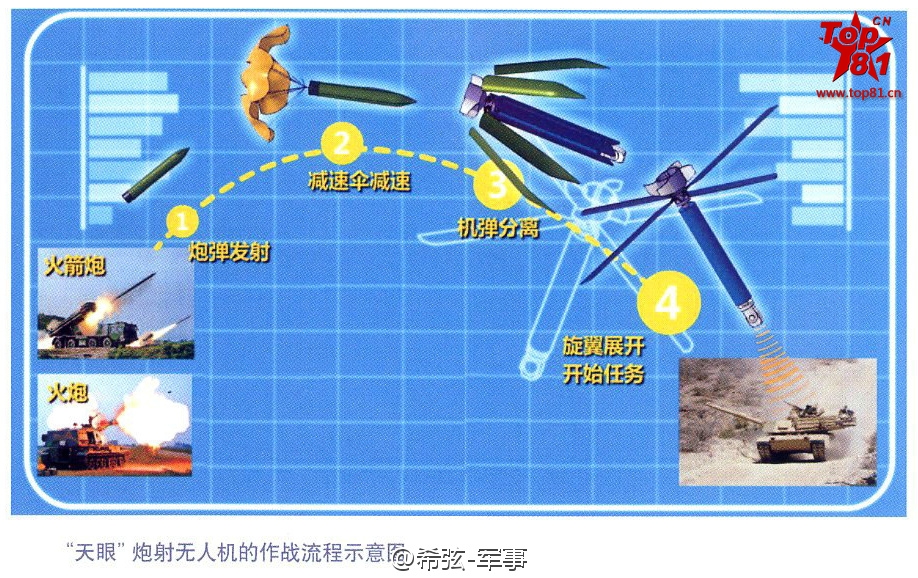


Chengdu Aviation Corporation is famous for designing some of China’s largest UAVs, but now they’re offering something far smaller, but just as deadly. This little drone can be fired from large artillery, such as a 155mm cannon or a rocket launcher, to quickly scout for and light up enemy armored vehicles with its laser designator. Once enemy vehicles have been targeted, the parent artillery battery can fire off laser guided shells and artillery to accurately destroy the enemy.

This drone is launched inside a specially designed warhead inside a rocket or artillery shell. At the appropriate attitude, the warhead deploys a parachute in order to slow down and release the drone. The drone then uses its four wings to stay aloft, while it scans for enemy vehicles. An operator back at the artillery battery designates the drone to use its laser (as well as any another sensors) to lock onto enemy vehicles by marking their rooftops, just like the laser designator on a Reaper drone or Apache attack helicopter. Top down attacks on those enemy vehicles by artillery guided by the drone’s laser are especially since they’ll directly impact the weak top armor of tank and IFV turrets.

This small artillery-launched drone offers advantages over small traditional UAVs and larger reconnaissance UAVs. Artillery launch provides the drone with speed and mobility advantages over small hand launched UAVs like the Raven. Its small size also makes it cheaper and harder to detect, compared to a larger UAV like the ScanEagle. This drone represents not only the growing innovation in Chinese unmanned system, but also advancements in Chinese defense networking and battlefield situational awareness.
You may be interested in:
China Shows Off Its Growing Drone Fleet
China’s New Military Robot Packs More Robots Inside, Starcraft Style
Are Weaponized ‘Crab Walkers’ the Future of Chinese Land Wars?
New Inflatable Chinese Drones: Battlefield Balloons?
